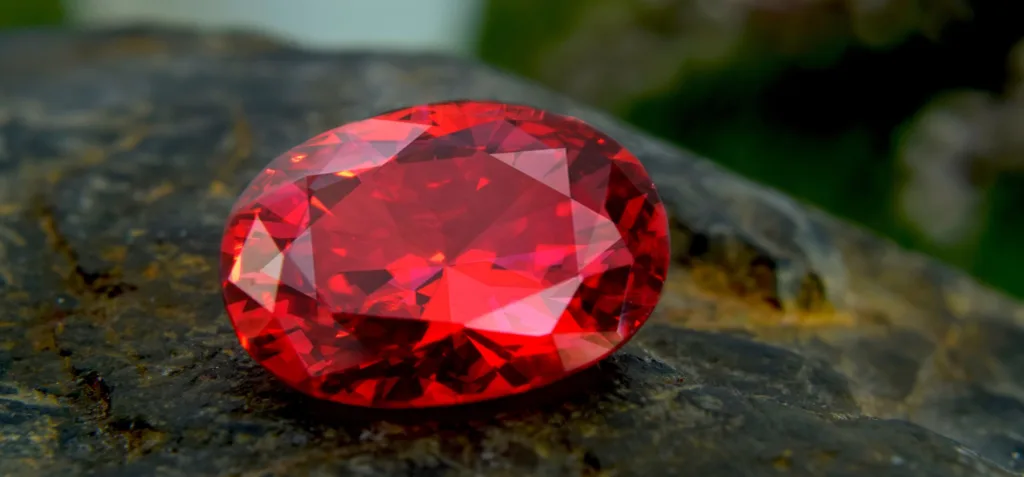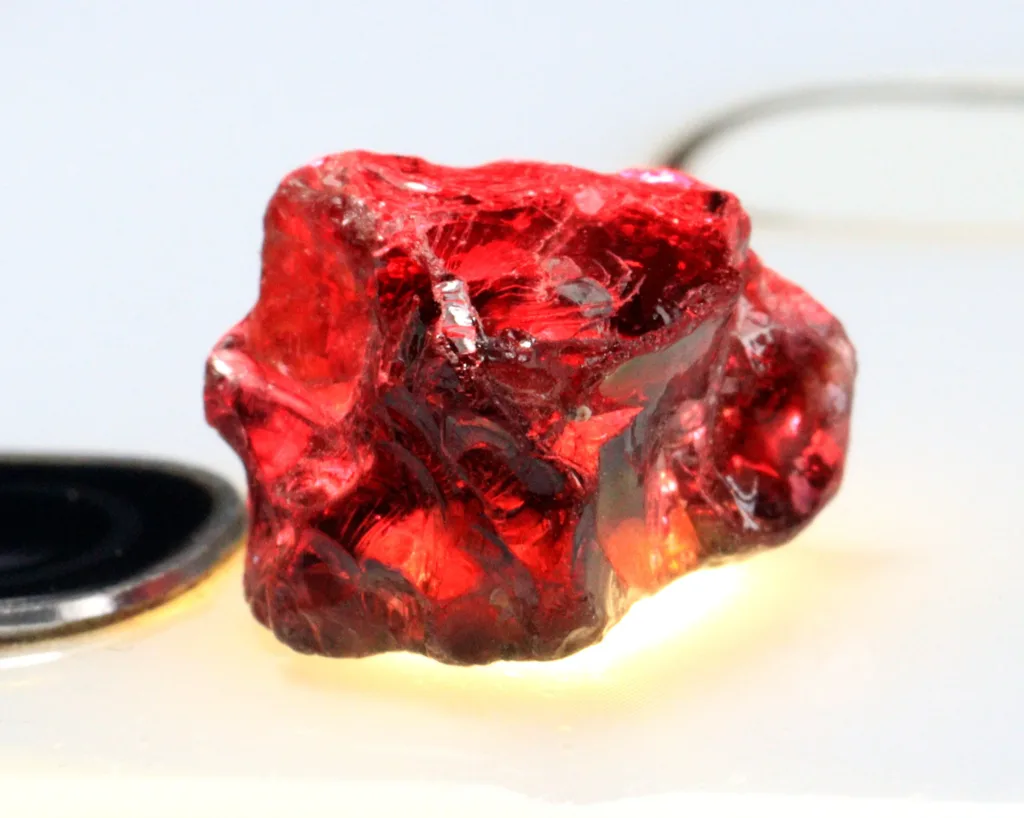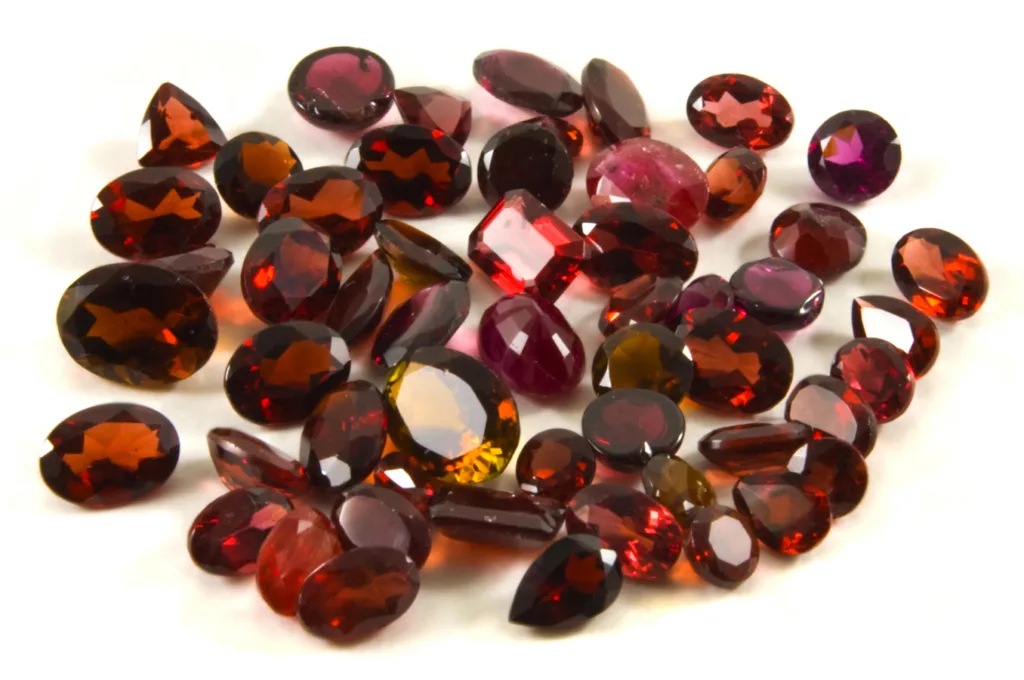Garnet is more than just a dazzling gemstone—it carries a rich history, deep symbolism, and remarkable versatility. Revered for centuries, this fiery stone has adorned everything from royal jewelry to protective amulets and even industrial tools. With its wide range of colors and impressive durability, garnet remains one of the most fascinating gems in both the jewelry world and beyond. In this article, we’ll explore garnet’s origins, its historical and cultural significance, and the many ways it continues to shine in modern times.

A Gem Born from Nature’s Fire
The name garnet comes from the Latin word granatum, meaning “pomegranate,” due to its resemblance to the fruit’s deep red seeds. However, garnet isn’t just one stone—it’s a family of minerals that come in a spectrum of colors. While the classic deep red is the most recognized, garnets can also appear in striking shades of green, orange, yellow, and even rare blues and purples.
This diversity comes from the different chemical compositions of garnet varieties. Some of the most notable types include:
- Almandine & Pyrope – Rich red hues, often seen in antique jewelry.
- Spessartine – A vibrant orange variety, sometimes called “mandarin garnet.”
- Grossular – Includes rare green garnets like tsavorite.
- Andradite – Known for the brilliant green demantoid garnet.
- Uvarovite – A rare deep green garnet, usually found in tiny, dazzling crystals.
These variations make garnet one of the most versatile and unique gemstone families in the world.
Garnet’s Journey Through History

Garnet’s legacy dates back over 5,000 years, making it one of the oldest known gemstones. Many ancient civilizations prized garnet for its beauty and mystical properties.
- Ancient Egypt: Pharaohs and nobles wore garnet jewelry, believing it symbolized life, vitality, and protection. Garnet amulets were often buried with the dead to ensure safe passage to the afterlife.
- Ancient Rome: Garnet signet rings were used by Roman officials to seal documents in wax, a sign of both status and authority.
- Medieval Europe: Knights and warriors carried garnet amulets for protection in battle, believing the stone had the power to ward off evil and misfortune.
- Asia & the Middle East: In India and Persia, garnet was associated with wealth, success, and spiritual enlightenment. Chinese emperors believed it could promote longevity and balance energy.
This long-standing history of reverence shows just how deeply embedded garnet is in human culture.
Symbolism & Spiritual Meaning

Garnet has been connected to a variety of symbolic meanings across different cultures:
- Passion & Love – The deep red hue has made garnet a symbol of romance, commitment, and deep emotional connection.
- Protection & Strength – Warriors and travelers believed garnet could shield them from harm and misfortune.
- Vitality & Energy – Often associated with blood and life force, garnet is thought to revitalize the body and mind.
- Healing & Balance – Some believe garnet can clear negative energy and restore emotional harmony, making it a popular choice in spiritual practices.
Beyond Beauty: The Strength of Garnet

Garnet isn’t just a stunning gemstone—it’s also incredibly durable. With a hardness of 6.5 to 7.5 on the Mohs scale, garnet is tough enough for everyday wear. Its natural abundance and strength have also made it useful in industrial applications:
- Abrasives – Garnet is widely used in sandpaper, grinding tools, and sandblasting due to its hardness.
- Waterjet Cutting – High-pressure waterjets use garnet particles to slice through metal, stone, and glass with extreme precision.
- Filtration – Garnet is used in water filtration systems to remove impurities, thanks to its density and chemical stability.
This practical side of garnet shows that its value extends far beyond jewelry.
Garnet as a Birthstone & Zodiac Stone

Garnet is the birthstone for January, symbolizing strength, perseverance, and protection. It’s also linked to the zodiac signs Capricorn and Aquarius, believed to enhance Capricorn’s ambition and Aquarian creativity. Additionally, garnet is the traditional gemstone for second wedding anniversaries, representing lasting love and devotion.
Where in the World is Garnet Found?
Garnet deposits are found in many parts of the world, with different regions producing unique varieties:
- East Africa (Kenya & Tanzania) – Known for the brilliant green tsavorite garnet and fiery orange spessartine.
- Russia – Home to the rare demantoid garnet, which sparkles with diamond-like brilliance.
- India & Sri Lanka – Produce deep red almandine garnets and star garnets, which display a rare star-like reflection.
- United States (New York & Idaho) – The historic Barton Mines in New York are one of the oldest sources of garnet, supplying both gem-quality and industrial garnet.
A Gemstone That Stands the Test of Time
From the crowns of ancient kings to modern high-tech applications, garnet has proven itself to be more than just a beautiful stone. Its historical significance, deep symbolism, and practical uses make it a truly remarkable gem. Whether worn as a symbol of love and passion or used in industrial cutting, garnet remains a powerful and enduring part of human history.
For those who wear it, garnet is not just a gemstone—it’s a reminder of strength, resilience, and the fiery spirit within us all.




































